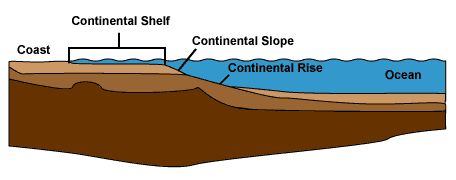
The face of the Earth is always changing and throughout geologic history oceans have been created and destroyed. Modern geologic evidence indicates that the ocean bottom is moving at a rate from about one-half to six inches a year through a process called plate tectonics. Roughly 200 million years ago the Earth's surface was very different from the familiar pattern of land we know today. All of the land masses were grouped together into one vast supercontinent called Pangaea. The rest of the globe was covered by a single great ocean known as Panthalassa. Slowly, over millions of years, the great land mass split apart. The pieces began to move over the Earth's surface driven by slowly churning currents in the molten rocks beneath the Earth's hard outer layers. The gigantic plates on the Earth's crust move like a conveyor belt. As new areas of ocean floor form at mid-ocean ridges, old areas are dragged down, or subducted, into the Earth's mantle, which explains why the older rocks cannot be found. By about 35 million years ago the pattern of land and sea was very much like it is today. But the continents are still moving and as the Atlantic and Indian oceans continue to get wider by a few inches every year, the Pacific is slowly shrinking. At the northeast corner of Africa we can see the start of a new ocean. For the last 25 million years, the Red Sea has been widening. If it continues at the same rate, in 200 million years it will be as wide as the Atlantic is today. |
